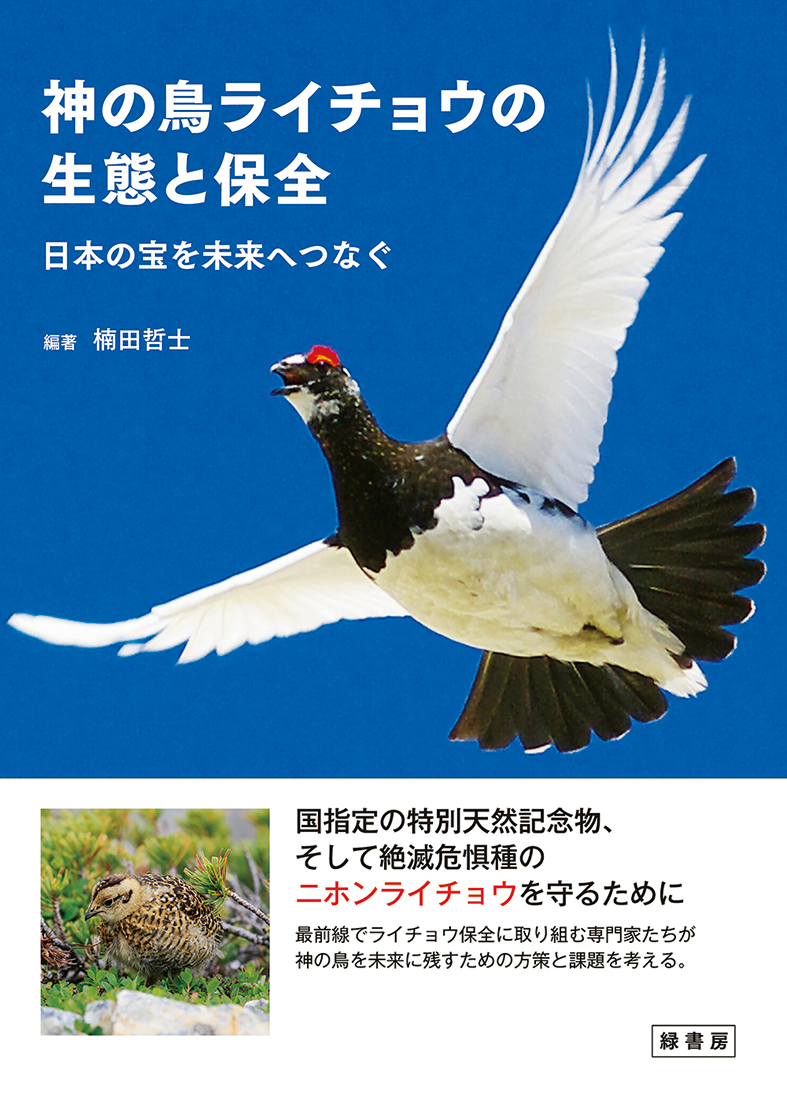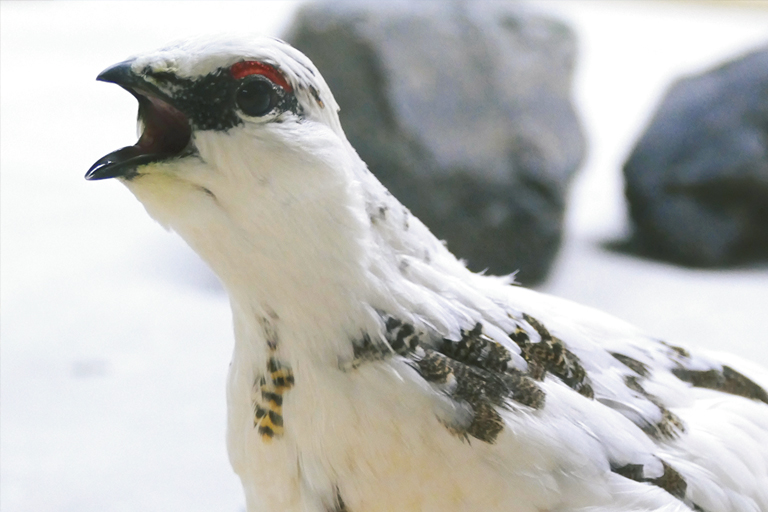【CONTENTS】History and Conservation of the Japanese Rock Ptarmigan

Japanese people and the Rock Ptarmigan
Rock Ptarmigan are widely spread throughout the cold regions in the northern portions of the northern hemisphere. They are the world’s southernmost subspecies of Rock Ptarmigan. From ancient times in Japan, there has been a mountain worship practice with a belief that gods live within the mountains, and Rock Ptarmigan, who live nestled deep within the mountains, were worshipped as incarnations or messengers of the gods. Mountains are an essential source of water for the villages sustaining rice cultivation. Rock Ptarmigan appear in many waka poems and illustrations. Now called “raicho” in Japanese, in the Heian and Kamakura periods they were called “Rai-no-tori” meaning “birds of rai” and that “rai” was eventually represented as the kanji for “thunder.” There are various theories as to how they got the name “thunderbird,” but Rock Ptarmigan are often found within dark clouds or fog, and there is an old saying that “when Rock Ptarmigan appear, thunder rumbles.” This may be because carnivorous birds of prey also do not fly in thunderstorms allowing Rock Ptarmigan to show themselves. In the Edo period, the only building to survive the great fire at the Kyoto Imperial Palace was the one with a Rock Ptarmigan picture scroll, popularizing illustrations of Rock Ptarmigan as talismans against fire. The alpine zone had not been pioneered because of the belief in the sacredness of mountains and the reverential fear they inspired, which meant that Rock Ptarmigan were not often hunted. They were designated a protected bird species in the Meiji period and a national natural monument in the Taisho period. Today, they are protected under the Act on Conservation of Endangered Species of Wild Fauna and Flora. They do not fear humans and will not fly away if humans approach them, which is a characteristic not seen among other Rock Ptarmigan around the world. The unique traits of Japan’s Rock Ptarmigan may be due to the long history of beliefs and culture maintained by the Japanese people.
The book “Kami no Tori – Raicho no Seitai to Hozen – Nihon no Takara wo Mirai e Tsunagu” (which roughly translates to “The Bird of the Gods – the Ecology and Conservation of Rock Ptarmigan – Japan’s Treasure is the Key to the Future”) was created by more than 70 specialists who each share their expert knowledge from their respective fields and offers a comprehensive education on Rock Ptarmigan.



A large number of Rock Ptarmigan make the Norikura Mountains, one of Japan’s 100 Famous Mountains, their home. It is said that Norikura, which is literally translated to “ride saddle mountain” was named such because the mountains are shaped like a horse’s saddle. The photo is from Takayama City in Gifu Prefecture.
The Norikura Mountains—The motherland of Rock Ptarmigan conservation
Rock Ptarmigan, which are designated as special natural monuments, are currently facing extinction. Since the launch of the Ministry of the Environment’s conservation and propagation project in 2012, active progress is being made with in-situ conservation in areas they naturally inhabit and ex-situ conservation in zoos. The Norikura Mountains, which straddle the borders of Nagano and Gifu prefectures, is a vast habitat inhabited by many Rock Ptarmigan, which is why it has become a base and starting point for conservation activities. The cage protection method, which is one in-situ conservation technique and was developed based on the research conducted at the Norikura Mountains, has undergone verification experiments. In addition, in ex-situ conservation started with the cooperation of the Japanese Association of Zoos and Aquariums using eggs that were gathered on the Norikura Mountains in 2015 and 2016. In connection with that, our laboratory continues to research zoos and breeding physiology to establish even better methods of captive breeding. The various initiatives started on the Norikura Mountains have led to a revival project in the Central Alps starting in 2019, where the species had been extinct. The Norikura Mountains are the point of origin for conservation activities.


